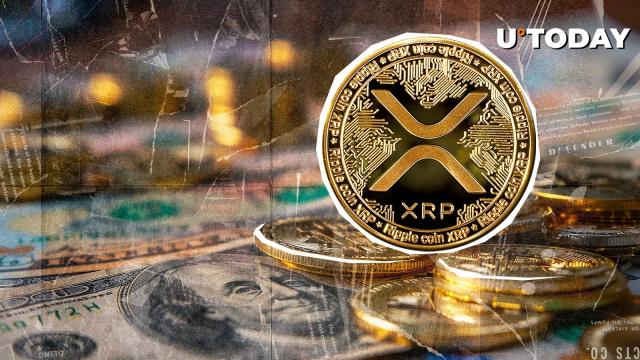Written by: White55, Mars Finance
A nine-hour voting process with a four-vote difference, a late-night White House meeting, and a dramatic breakthrough of three bills mark a watershed moment in U.S. crypto regulation.
 Voting on the CLARITY Act on Thursday. Source: U.S. House of Representatives
Voting on the CLARITY Act on Thursday. Source: U.S. House of Representatives
Late on July 17, the U.S. House of Representatives passed three key cryptocurrency bills through a marathon voting session lasting over 8 hours, setting a record for the longest vote since the electronic voting system was implemented.
This legislative battle, dubbed "Crypto Week," concluded with the GENIUS Act passing 308-122 and the CLARITY Act passing 294-134.
Before the market could digest this significant news, the Financial Times revealed another shocking policy development: the Trump administration is drafting an executive order to allow 401(k) retirement plans worth $9 trillion to invest in alternative assets like cryptocurrencies.
Bill Passage: A Political Gambit Decided by Four Votes
The legislative process was far more dramatic than the market expected.
On July 15, over 10 Republican representatives voted against the procedural vote, blocking the bill's advancement.
The deadlock continued until the evening of the 16th, when the House narrowly passed the procedural vote to allow the bill to proceed to debate, with 217 votes to 212.
This was just the first hurdle.
On July 17, House Republican hardliners again caused disruption, temporarily halting the vote. The core of the deadlock was conservative demands to ensure the Anti-CBDC Act would pass, while Financial Services Committee members worried additional clauses might cause both bills to fail.
At a critical moment, Trump personally intervened to mediate.
Late Tuesday, Trump urgently met with about 12 conservative representatives in the Oval Office. He later claimed on social media: "They all agreed to support the rule." However, this promise did not immediately take effect.
On Wednesday, House Speaker Johnson engaged in closed-door negotiations lasting over nine hours with Financial Services Committee, Agriculture Committee members, and conservative representatives. The final compromise was to attach the Anti-CBDC Act to another "must-pass" National Defense Authorization Act. This political wisdom broke the deadlock and cleared the way for the final vote on three bills.
Bill Analysis: A Historic Reconstruction of the Regulatory Framework
The three bills form the cornerstone of U.S. crypto regulation, each targeting different areas:
GENIUS Act: Compliance Pathway for Stablecoins
The bill requires stablecoins (like USDT, USDC) to be backed by 100% U.S. dollar cash or short-term U.S. Treasury bonds, with monthly public asset statements. Issuers with over $50 billion in scale must undergo additional annual audits. This means compliant stablecoin issuers like Circle will gain a significant advantage - their stock price already surged 14% before the bill's passage.
More strategically, the mandatory U.S. Treasury reserve could make stablecoin issuers the third-largest U.S. Treasury buyers after the Federal Reserve and foreign governments. Treasury Secretary Becent predicted this could generate up to $2 trillion in U.S. Treasury demand.
CLARITY Act: A Century-Defining Allocation of Regulatory Responsibilities
This 236-page bill first clearly defines the distinction between "digital asset securities" and "digital commodities". Its core breakthrough is introducing the "mature blockchain system" concept: tokens meeting decentralized governance, open-source code, and automated operation standards can be regulated as commodities.
The bill also exempts four types of entities from compliance obligations: blockchain underlying developers, node operators, DeFi protocol frontend developers, and non-custodial wallet service providers. This means companies like Uniswap Labs that only provide interfaces no longer need to worry about "unregistered exchange" accusations.
Anti-CBDC Act: A Monopoly Defense for U.S. Dollar Stablecoins
The bill directly prohibits the Federal Reserve from issuing Central Bank Digital Currency (CBDC) without Congressional authorization, cutting off competition between official digital currencies and stablecoins. Against the backdrop of over 98% of global central banks developing CBDCs (including China's digital yuan), this bill aims to consolidate the global monopoly of U.S. dollar stablecoins.
Retirement Fund Revolution: Breaking Barriers in a $9 Trillion Market
Before the legislative victory cheers could subside, the Financial Times again revealed a policy bombshell: the Trump administration is drafting an executive order requiring labor and other departments to remove regulatory obstacles, allowing 401(k) retirement plans to invest in cryptocurrencies, gold, and private equity.
This policy has been paved the way. In May this year, the Labor Department already withdrew guidance from the Biden administration that hindered 401(k) crypto investments, signaling "investment neutrality". Even earlier, in 2022, Republican Representative Peter Meyer proposed the Retirement Savings Modernization Act to incorporate digital assets into retirement fund frameworks.
The strategic intent of the new policy is clear:
- Open asset classes: Break the long-standing 401(k) limitation to traditional stocks and bonds, incorporating cryptocurrencies, gold, and private funds
- Reduce legal risks: Establish a "safe harbor" mechanism for plan managers to avoid excessive litigation when offering high-risk assets
- Restructure capital flows: Unlock investment restrictions in the $9 trillion retirement fund market, bringing long-term funds to alternative assets

To understand the far-reaching impact of this policy, one must deeply analyze the structure and scale of the U.S. retirement fund market. As the world's top retirement reserve system, the U.S. retirement fund market has exceeded $9 trillion.
Breaking it down, as of the end of March 2025, employer-led defined contribution (DC) retirement plan assets reached $12.2 trillion. Among these, the 401(k) plan alone accounts for $8.7 trillion, becoming the core carrier of long-term wealth reserves for U.S. working-class families.
This massive fund comes from continuous contributions of millions of workers.
The 401(k) plan has become the cornerstone of asset allocation for most families through key advantages like pre-tax deductions, tax incentives, and employer matching.
Traditionally, retirement funds were mainly allocated to public market securities. As of the first quarter of 2025, about 61% ($5.3 trillion) of 401(k) plans were managed by mutual funds, with stock funds ($3.2 trillion) dominating, followed by mixed products like target-date funds at $1.4 trillion. This allocation pattern primarily focused on equity and fixed-income public funds provides operational space for alternative asset policy breakthroughs.
Individual Retirement Accounts (IRA) offer more investment flexibility, and these retirement savings accumulated continuously by ordinary people constitute the long-term capital source supporting the U.S. economy and capital markets.
Comparing with China's pension system, both countries adopt a multi-layered design: domestic enterprise/occupational annuities have employer-sponsored attributes similar to 401(k), while personal retirement accounts align with IRA's self-investment logic.
Therefore, the expansion of U.S. retirement fund investment scope has important reference value for global asset allocation concepts.
And Wall Street giants with keen senses have already laid out in advance:
- Blackstone Group reaches a cooperation with Vanguard
- Apollo Asset Management and Partners Group provide private products to retirement plan operator Empower
- BlackRock establishes a partnership with third-party management agency Great Gray Trust
State governments have also taken the lead. North Carolina proposes allowing retirement funds to allocate 5% to cryptocurrencies; Michigan and Wisconsin retirement systems have already invested in Bitcoin and Ethereum spot ETFs.
Conclusion: Challenges in the Era of Regulatory Clarity
On July 18, the Genius Act will be signed into effect by Trump; the 401(k) new policy administrative order may be announced this week. Behind the policy combination, there is the ambition of the United States to compete for the position of crypto hegemon.
As $90 trillion in retirement funds connect with the crypto market, the boundaries between traditional finance and digital assets are melting. Institutions like BlackRock have begun to include Bitcoin ETFs in their balance sheets, and JPMorgan plans to accept Bitcoin as loan collateral.
The innovation dividend brought by regulatory clarity may help the United States regain blockchain leadership. However, the risks of this experiment cannot be ignored - ordinary Americans' retirement money is being invested in highly volatile new assets, while Wall Street private equity giants will become the biggest beneficiaries.
A watershed moment in global crypto history has arrived. The "clarity" of regulation will ultimately forge the "freedom" of innovation, but how to balance freedom and risk still tests the wisdom of policymakers.







